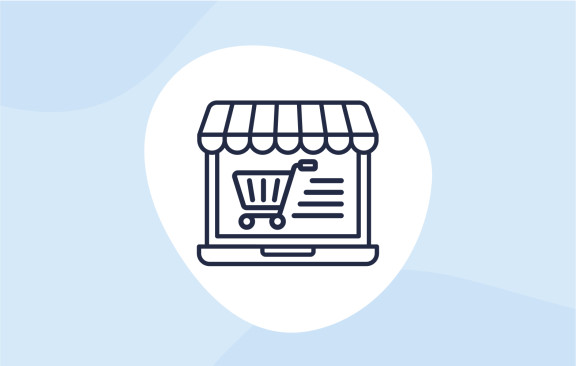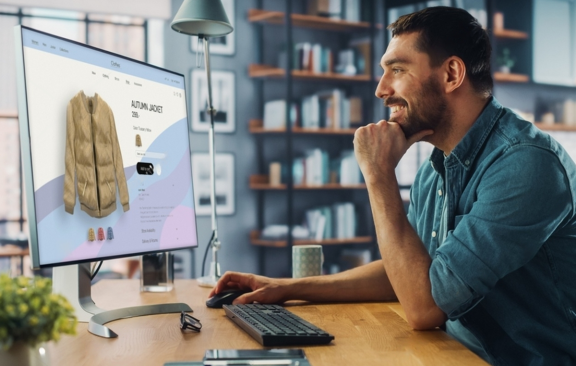Quick Answer
To sell merch profitably, identify trending products and design eye-catching merchandise. Use print-on-demand platforms to minimize upfront costs or bulk ordering to maximize margins. Build an online store, market your products through multiple channels, and provide excellent customer service to keep customers coming back.
In the past, selling merchandise online was reserved for celebrities, major brands, and bands on tour. But times have changed. Now, anyone with a creative idea or a loyal fan base can set up an online store and start selling merch. Whether you're a YouTuber, a small business owner, or just someone looking to make a little extra cash on the side, there's no better time to jump into the world of selling custom merchandise.
Why is it such a great time to start? Thanks to platforms like Shopify and the rise of print-on-demand (POD) services, setting up an online store is easier than ever. You don't need to order products in bulk or deal with the headaches of inventory management. On top of that, people love to support their favorite creators, businesses, or even quirky niche ideas through merch. Whether it’s a custom-designed t-shirt, a reusable tote bag, or a trendy mug, the potential is enormous.
But while selling merch online is accessible, it doesn’t guarantee profit. The marketplace is flooded with options, and to stand out, you need more than just good designs. You need a smart approach. In this guide, we’ll show you how to get your merch ideas off the ground and, most importantly, how to turn them into a profitable business.
Finding Your Niche and Coming Up with Merch Ideas
The first step to successfully selling merch online is figuring out what you’re going to sell and who you’re going to sell it to. Without a clear niche, your business can easily get lost in the crowd.
Why Your Niche Matters
The right niche helps you cut through the noise. It allows you to target specific audiences with unique products that speak directly to their interests. Here's how you can define your niche:
- Personal Interests: Start by thinking about what you’re passionate about. Selling merch based on topics or hobbies you care about makes the process more enjoyable and can resonate more deeply with others who share your interests.
- Trends: While following your passion is important, it’s also essential to align your merch ideas with market trends. SaleHoo Market Insights is a useful tool to check if the product or niche you're considering has a growing audience. It’s all about blending passion with demand.
- Audience Identification: The clearer you are about who your audience is, the better you can serve them. Think about their age, location, interests, and buying habits. Are you targeting tech lovers, fitness enthusiasts, or eco-conscious shoppers? A well-defined target audience helps you create merch they actually want to buy.
Popular Types of Merch to Sell Online
Now that you’ve identified your niche, it’s time to explore the types of merch you can sell. Below are some popular categories to consider, each with its own potential for customization and profitability:
1. Apparel

Apparel is one of the most popular types of merchandise sold online, and for good reason. It’s highly customizable and appeals to a broad audience.
- T-Shirts: The classic go-to for merch, offering endless design possibilities. They’re affordable to produce, especially through print-on-demand services.
- Hoodies and Sweatshirts: Perfect for colder weather, hoodies offer higher price points and are loved by a wide range of customers.
- Caps and Hats: Ideal for branded designs or simple logos. They are also a practical accessory that can be worn year-round.
- Socks: Customized socks have become trendy, offering a fun and affordable merch item for fans.
2. Accessories

Accessories are an easy upsell to complement larger purchases or standalone buys for fans looking for something small and affordable.
- Bags: Reusable tote bags, backpacks, and sling bags are popular choices. They’re useful, eco-friendly, and provide great real estate for logos or designs.
- Jewelry: From bracelets to necklaces, small accessories can offer big profits with low shipping costs.
- Phone Cases: Everyone has a phone, which means everyone needs a case. Custom-designed phone cases are in constant demand.
- Watches: Branded or uniquely designed watches can be a higher-end merch item that customers are willing to pay a premium for.
3. Home and Living

Merchandise doesn’t have to be worn to be profitable. Home and living products can be equally attractive.
- Mugs and Drinkware: Who doesn’t love a custom mug? They make for great gifts and are perfect for adding quirky, humorous designs.
- Posters and Prints: These are ideal for creators or artists who want to sell their work in an affordable format. Posters and art prints are easy to produce and ship.
- Pillows and Cushions: Decorative items for the home are always popular, and cushions allow for creative, large-format designs.
- Blankets and Throws: Customized blankets are gaining popularity as a cozy, practical merch item with a higher price point.
4. Office Supplies

For businesses targeting professionals, branded office supplies are a no-brainer.
- Notebooks and Journals: These are practical, everyday items that also allow for creative cover designs.
- Pens and Stationery: While small, custom pens and stationery can leave a lasting impression, especially when part of a bundle or giveaway.
- Mouse Pads: With remote work becoming more common, a personalized mouse pad can be a fun way for people to spruce up their home office.
5. Technology and Gadgets

In today’s tech-driven world, gadgets are always in demand.
- USB Drives: Custom USB drives are not only useful but offer a functional canvas for branding or logos.
- Headphones and Earbuds: Branded tech items like earbuds can appeal to audiophiles or anyone on the go.
- Charging Accessories: Phone chargers and power banks are practical merch that customers love for their utility.
6. Health and Beauty

Health-conscious consumers are always looking for trendy and functional products.
- Cosmetic Bags: These are great for fashion or beauty brands looking to expand into accessories.
- Skincare Products: Private-label skincare products like creams or lip balms can make for lucrative, high-margin merch.
- Reusable Masks: In a post-pandemic world, reusable face masks are still in demand, especially when customized with creative designs.
7. Toys and Games

Toys and collectibles are big sellers, especially for fans of specific franchises or niches.
- Plush Toys: Custom plush toys of mascots or popular characters are perfect for fandom-based merch.
- Board Games and Puzzles: These products appeal to customers who enjoy brain-teasers or group activities.
- Action Figures and Collectibles: If your audience is into pop culture or gaming, collectibles can be highly profitable.
8. Seasonal and Event-Specific

Limited-time merch for special occasions can generate a sense of urgency and exclusivity.
- Holiday Decorations: From Halloween-themed items to Christmas ornaments, seasonal decor can be a big hit.
- Event Merchandise: Items like concert tees, festival gear, or special-edition merch for events are always popular.
- Wedding Favors: Customized wedding favors like coasters or bags can be a niche but profitable market.
9. Eco-Friendly Products

Sustainability is more than just a trend—it’s a movement. Eco-conscious consumers are on the lookout for sustainable merch.
- Reusable Bags: Whether for groceries or daily use, reusable bags with creative designs are always a hit.
- Sustainable Clothing: Ethically sourced and eco-friendly apparel is becoming more popular, and customers are willing to pay more for products that align with their values.
- Reusable Straws and Utensils: These small, eco-friendly items are great for promoting sustainability while being functional.
Designing Your Merch: From Idea to Product
Once you’ve picked your niche and the type of merch you want to sell, it’s time to focus on design. Your designs are what will set you apart in a crowded marketplace. Whether you're selling t-shirts, phone cases, or posters, your designs need to resonate with your target audience.
Creating Unique and Compelling Designs
With so much competition out there, it’s essential to make your merchandise stand out. To create designs that grab attention:
- Be original: Avoid copying what’s already out there. Your designs should reflect your unique style, brand, or message.
- Use humor or emotion: Designs that make people laugh or connect emotionally often perform well.
- Research design trends: Stay up-to-date with the latest design trends. Whether it’s minimalist, bold typography, or retro aesthetics, align your designs with what’s hot in your niche.
Tools for Creating Merch Designs
You don’t have to be a professional designer to create stunning merchandise. There are plenty of online tools to help you get started:
- Canva: Canva is a beginner-friendly design tool with thousands of templates. Whether you’re designing a t-shirt or a poster, it’s easy to customize pre-made designs or create your own from scratch.
- Placeit: Placeit offers a huge library of design templates and mockups. One standout feature is that you can preview your designs on products like hoodies, mugs, or phone cases before selling them.
- Adobe Spark: If you’re looking for more design flexibility, Adobe Spark offers advanced design tools, letting you create highly customized merchandise with more intricate details.
Sourcing and Production: Print-on-Demand vs. Bulk Manufacturing
Once you have your designs ready, you need to bring your ideas to life. You have two main options when it comes to sourcing and production: print-on-demand (POD) or bulk manufacturing.
Print-on-Demand (POD)
Print-on-demand platforms are a great option for those who want to avoid upfront costs. POD allows you to upload your designs, and products are only printed when a customer places an order. This means you don’t have to worry about holding inventory or managing shipping.
Popular POD platforms include Printful, Printify, and Redbubble. These platforms integrate easily with eCommerce stores and offer a wide range of products to customize.
Bulk Manufacturing
Bulk manufacturing, on the other hand, involves ordering your merchandise in larger quantities. While this requires a more significant upfront investment, it usually comes with lower per-unit costs, allowing for higher profit margins. Bulk production is ideal if you’re confident your merch will sell or if you want to sell at higher volumes.
Using SaleHoo’s Supplier Directory can help you find vetted manufacturers who can handle bulk production. The directory gives you access to thousands of suppliers who have been pre-verified, ensuring you’re working with reliable partners.
Branding and Packaging: Going Beyond the Product
Your branding is more than just your product—it’s how your customers perceive your entire business. Whether it’s a custom logo on your packaging or a branded thank-you note, small details can make a big impact.
Creating Consistent Branding
Your logo, colors, and fonts should all work together to create a cohesive brand image. Consistency is key. Whether someone visits your website or unboxes your product, they should feel the same vibe.
Memorable Packaging
The unboxing experience is crucial for creating a lasting impression. Packaging doesn’t need to be over-the-top, but it should reflect your brand. Even simple touches like branded tissue paper or a custom sticker can elevate your packaging and make it memorable.
Setting Up Your Merch Store
After you've designed and sourced your products, the next step is setting up your online store. Whether you go with Shopify, Etsy, or another platform, having a professional-looking, easy-to-navigate store is crucial for converting visitors into customers.
Here’s a quick rundown of the most popular platforms for selling merch online:
- Shopify: Ideal for those wanting an all-in-one eCommerce solution. Shopify offers flexibility and an easy-to-use interface for setting up your store, managing products, and handling payments.
- Etsy: Etsy is a popular marketplace for handmade and vintage items. If you’re selling creative or niche products, Etsy could be a great option, as it provides access to an established audience.
- WooCommerce: A free WordPress plugin that turns your website into an eCommerce store. WooCommerce is highly customizable but may require more technical know-how.
Marketing Your Merch: Get the Word Out
Marketing is one of the most critical parts of selling merch online. No matter how great your designs are, you won’t make sales if people don’t know your store exists.
Social Media Marketing
Platforms like Instagram, TikTok, and Pinterest are ideal for promoting visually-driven products like merch. Consistency is key to building a loyal following and generating sales. Posting regularly, interacting with your audience, and running giveaways or contests can help you build engagement and grow your store.
Influencer Collaborations
Partnering with influencers in your niche can help you reach a wider audience. Influencers have dedicated followings who trust their recommendations, making them great partners for promoting your products.
Paid Advertising
If you want to speed up your growth, consider running ads on platforms like Facebook, Instagram, or Google. Paid ads allow you to target specific audiences based on interests, behaviors, and demographics.
Customer Service and Fulfillment: Keep Them Coming Back
Great customer service is essential for repeat business. Happy customers not only come back—they also spread the word. Ensure your customer service is top-notch by being available, responding quickly, and addressing any issues professionally.
Additionally, smooth order fulfillment—from sending a timely order confirmation to providing accurate tracking—will keep your customers satisfied and likely to recommend your store.
Final Thoughts:Turning Your Merch Store into a Profitable Venture
Selling merch online can be a rewarding venture if done right. With the rise of print-on-demand services and easy-to-use eCommerce platforms, it’s never been easier to get started. However, the key to long-term success is careful planning, great designs, strategic marketing, and a deep understanding of your audience.
Once you’ve established your store, continue to innovate. Experiment with new designs, introduce seasonal products, and always listen to your customers’ feedback. With dedication, your merch store can not only be a fun creative outlet but also a highly profitable business.
If you're ready to dive into the world of selling merch, check out SaleHoo’s Directory and Dropship services to find reliable suppliers and trending products today!













